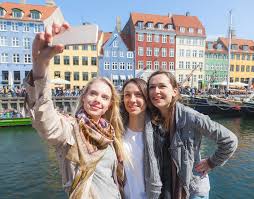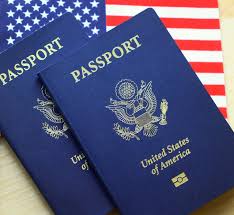How to Travel to Denmark
Denmark, a Scandinavian jewel, is known for its rich history, vibrant culture, and stunning landscapes. From picturesque castles to modern cities and an unbeatable sense of sustainability, Denmark is a fantastic destination for travelers.
Whether you’re drawn to the allure of Copenhagen’s urban charm, the quiet countryside, or the coastal beauty, there’s something for every traveler. In this comprehensive guide, we’ll walk you through everything you need to know about how to travel to Denmark—from visa requirements to must-visit attractions and local travel tips.
1. Getting a Visa and Other Entry Requirements
Who Needs a Visa to Travel to Denmark?
Denmark is part of the Schengen Area, a group of 27 European countries that have abolished passport control between each other’s borders. This means that depending on your nationality, you may not need a visa to enter Denmark for short stays (up to 90 days).
- Citizens of EU/EEA countries do not need a visa to visit Denmark and can enter with just an identification card or passport.
- Citizens of the US, Canada, Australia, and New Zealand can stay in Denmark and the Schengen Area for up to 90 days within a 180-day period without a visa.
- For citizens of other countries, including many African and Asian nations, a Schengen visa is required. It’s essential to apply for this visa well in advance, typically at least 15 working days before your planned departure.
How to Apply for a Schengen Visa?
If you require a visa, you can apply through the Danish embassy or consulate in your country. To obtain a Schengen visa, you will need:
- A valid passport with at least two blank pages.
- A completed visa application form.
- Two recent passport-sized photos.
- Proof of travel insurance with a minimum coverage of €30,000.
- Proof of accommodation (hotel reservation or invitation letter).
- Proof of financial means (bank statements, pay slips).
- A return or onward ticket.
Once submitted, the visa process can take between 10 to 15 business days, so plan your application ahead of time.
2. Best Time to Visit Denmark
Denmark has a temperate climate, meaning it experiences mild summers and cold winters, but not extreme temperatures. Deciding when to visit largely depends on what you want to experience.
- Summer (June to August): This is the most popular time for travelers due to the warm weather (15-25°C). Many attractions are open, and the long daylight hours (sometimes up to 18 hours) give you plenty of time to explore.
- Spring (March to May): A great time to visit if you want to avoid large crowds. The flowers bloom in spring, and temperatures are mild, usually between 5-15°C.
- Fall (September to November): Fall brings cooler weather and vibrant autumn colors. It’s a peaceful time to visit, but be prepared for rain.
- Winter (December to February): While the days are short, winter is magical in Denmark, especially with the Christmas markets. Copenhagen in December is beautifully lit up, though temperatures can drop to 0°C or lower.
3. Getting to Denmark
By Air
The most common way to get to Denmark is by flying. Copenhagen Airport (CPH) is the country’s largest and busiest airport, offering direct flights from major cities worldwide, including New York, London, Paris, Beijing, and Dubai. Other notable airports in Denmark include Billund Airport (BLL), Aarhus Airport (AAR), and Aalborg Airport (AAL).
Most international flights land at Copenhagen Airport, which is about 8 kilometers from the city center. From the airport, you can easily reach the city by train, metro, or bus.
By Train
If you’re already in Europe, traveling to Denmark by train can be an eco-friendly and scenic option. Denmark has excellent rail connections with neighboring countries such as Germany and Sweden. The Danish national railway company, DSB, operates trains from Germany (Hamburg and Berlin) and Sweden (Malmö and Stockholm) to Denmark. The train ride from Malmö to Copenhagen is particularly fast, taking only 30 minutes across the stunning Øresund Bridge.
By Car or Bus
Denmark is accessible by road, especially if you’re coming from other European countries. The Øresund Bridge connects Denmark to Sweden, making it easy to drive or take a bus between the two countries. Bus companies such as FlixBus offer affordable routes to Denmark from several European cities.
If you prefer driving, Denmark’s road network is excellent, with clear signage and well-maintained highways. However, be aware that fuel is relatively expensive in Denmark, and parking in city centers like Copenhagen can be costly.
By Ferry
Denmark’s geography, with its extensive coastline and islands, makes ferry travel another viable option. Ferries run between Denmark and countries such as Germany, Norway, Sweden, and the UK. DFDS Seaways and Scandlines are popular ferry companies offering regular routes.
4. Getting Around Denmark
Once in Denmark, there are various ways to explore the country. Denmark’s public transport system is efficient, reliable, and eco-friendly.
Public Transport
- Trains: Denmark’s train network is extensive and connects major cities such as Copenhagen, Aarhus, Odense, and Aalborg. The trains are comfortable, and many routes offer free Wi-Fi.
- Buses: Buses are a good option for local travel. In Copenhagen, the Movia bus network serves the city and suburbs. For intercity travel, long-distance buses like FlixBus and Eurolines are available.
- Metro and S-train: Copenhagen’s metro is modern and driverless, with lines running 24/7. The S-train network connects the city with outlying suburbs.
- Cycling: Denmark is famous for its cycling culture. Many cities, especially Copenhagen, have dedicated bike lanes, and you can rent bicycles easily. It’s one of the best ways to explore Denmark, whether you’re cruising through urban streets or along the beautiful countryside.
Renting a Car
Renting a car is a great option if you want to explore Denmark’s rural areas or visit multiple cities. Denmark has many car rental agencies such as Avis, Hertz, and Europcar. The country’s roads are excellent, and road trips through the scenic countryside are highly recommended.
Domestic Flights
For those short on time, domestic flights are available between Copenhagen and other cities like Aarhus and Aalborg. However, due to Denmark’s small size, traveling by train or bus is often a more sustainable and scenic option.
5. Must-Visit Attractions in Denmark
Denmark offers a wealth of experiences for visitors, from vibrant cities to charming villages and nature reserves.
Copenhagen
Copenhagen, the capital, is a must-see on any trip to Denmark. Some key attractions include:
- Tivoli Gardens: One of the world’s oldest amusement parks, Tivoli Gardens is magical, especially at night.
- The Little Mermaid Statue: This iconic bronze statue inspired by Hans Christian Andersen’s fairytale is one of the most photographed spots in Denmark.
- Nyhavn: The colorful, waterfront district of Nyhavn is perfect for a relaxing walk and some fantastic restaurants.
- Amalienborg Palace: Home to the Danish royal family, this palace is a stunning piece of architecture with a daily changing of the guard ceremony.
Aarhus
Denmark’s second-largest city, Aarhus, is known for its cultural scene. Visit the ARoS Aarhus Art Museum with its famous rainbow panorama or the Old Town Museum for a glimpse into Danish history.
Odense
The birthplace of Hans Christian Andersen, Odense is rich with history and charm. Don’t miss the Hans Christian Andersen Museum or the beautiful Odense Zoo.
Skagen
Located at the northern tip of Denmark, Skagen is famous for its unique light and stunning beaches. The town has long been a haven for artists and is home to the Skagen Museum, showcasing works from the famous Skagen Painters.
The Faroe Islands and Greenland
While not on mainland Denmark, the Faroe Islands and Greenland are autonomous territories within the Kingdom of Denmark. They offer breathtaking natural beauty and are ideal for adventurous travelers. Visit the rugged cliffs of the Faroe Islands or experience Greenland’s glaciers and fjords.
6. Local Cuisine
Denmark’s food scene is diverse, and it’s home to Noma, one of the world’s most renowned restaurants. Traditional Danish cuisine includes:
- Smørrebrød: Open-faced sandwiches often topped with seafood, cold cuts, or cheese.
- Danish pastries: Known locally as Wienerbrød, these buttery, flaky pastries are a must-try.
- Frikadeller: Danish meatballs served with potatoes and gravy.
- Herring: Pickled herring is a popular dish, often served as part of a traditional Danish lunch.
Denmark’s beer culture is also worth exploring. Try local brews from Carlsberg or smaller craft breweries like Mikkeller.
7. Travel Tips for Denmark
Language
The official language is Danish, but English is widely spoken, especially in urban areas, so you shouldn’t have trouble communicating.
Currency
Denmark uses the Danish Krone (DKK), and credit cards are accepted almost everywhere. However, it’s a good idea to have some cash on hand for smaller purchases.
Tipping
Tipping is not expected in Denmark, as service charges are typically included in the bill. However, rounding up the bill or leaving a small tip is appreciated for excellent service.
Safety
Denmark is one of the safest countries in the world, but it’s always wise to take basic precautions, such as keeping your belongings secure in crowded areas.
Sustainability
Denmark is at the forefront of sustainability, and you’ll notice many eco-friendly practices. Use public transport or rent a bike to reduce your carbon footprint, and recycle where possible.
Conclusion
Traveling to Denmark is a wonderful experience, with its seamless blend of modernity and history, urban sophistication and natural beauty. From the vibrant streets of Copenhagen to the serene coastal villages, Denmark offers something for every traveler.
With efficient transport systems, delicious cuisine, and a commitment to sustainability, Denmark is a country that will leave a lasting impression on anyone who visits.
Whether it’s your first time in Scandinavia or you’re a seasoned traveler, Denmark is sure to charm you with its warm hospitality and rich cultural heritage.






